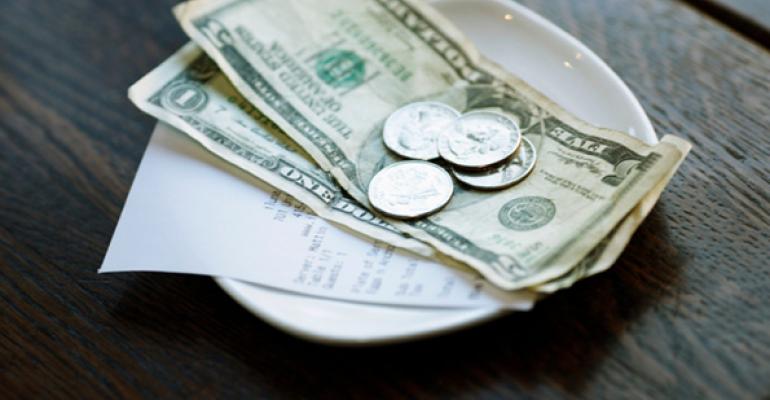Lower gas and commodity prices, coupled with high valuations and low debt costs, have generated some optimism for the restaurant industry heading into 2015.
That is the early takeaway from the Restaurant Finance & Development Conference, held in Las Vegas this week. A series of speakers gave an optimistic view of the economy, as well as the industry’s prospects to improve sales and profits.
“The past few years have required good operators to get better — and they have,” said Trey Brown, senior managing director and sales leader at GE Capital, Franchise Finance. “The people left standing are, almost without question, the best of the best. They’re operating profitable stores. They’re positive and upbeat.”
The annual conference is a gathering of operators, investors and lenders. It often provides a good indication of industry sentiment because attendees generally want to expand and build new units. So when they’re more optimistic, it can signal an industry in growth mode.
The industry is showing signs of improved sales and traffic after years of weakness. Traffic grew 0.4 percent in October, according to Black Box Intelligence, the first monthly traffic increase since February 2012. Sales should continue to grow next year.
John Barone, president of Market Vision Inc., noted that falling oil prices should result in lower gas prices next year. According to AAA, the national average price of gas has dropped for 46 consecutive days, the longest consecutive decline in gas prices since 2008. Currently, a gallon of gas is 20 cents cheaper than it was a year ago, and 30 cents lower than a month ago.
That should yield stronger sales at restaurants, according to Barone. “It’s putting extra income directly into the hands of lower and middle income consumers. Lower gas prices are like an instant tax cut. If gas prices stay low, 2015 could be the happiest year since 2007,” he said.
That, coupled with lower prices for many commodities, could make life easier for operators, after years of balancing demand for low-priced menu items and rising food costs.
Prices for cheese, chicken and hogs have all risen more than 20 percent over the past two years, but the economics have recently shifted in favor of producers, Barone said. Low corn prices have reduced the cost of feed, and suppliers are also benefitting from lower gas prices.
“There are strong incentives in favor of expanding production,” he said. That should drive food costs lower. Hog prices, for instance, are expected to decline 14.5 percent next year.
The exception is beef, because it takes two and a half years to rebuild a herd, Barone said. That means prices for steak and hamburgers should rise in 2015, but prices for other proteins should ease.
The biggest reason
(Continued from page 1)
Much of the optimism at the conference has come from economists, who told attendees not to expect another recession, and that economic growth should accelerate.
The biggest reason: Corporate profits.
“Corporate profits aren’t good. They aren’t great. Corporate profits are flat-out phenomenal,” said Peter Ricchiuti, finance professor at Tulane University.
Corporations have had record earnings for each of the past five years. That’s helping to move the market, which itself is reason to believe that economic growth will speed up.
“The stock market is a leading economic indicator, and the stock market is at an all-time high,” Ricchiuti said.
In addition, he said, companies have $2.2 trillion in cash on their balance sheets, which will eventually need to be spent. So far, the cash has been spent on acquisitions, share buybacks and dividends. Companies will eventually need to spend that money on capital expenses that generate jobs.
“It’s got to go to work,” Ricchiuti said. “If you’re an individual who is scared, you can hoard cash. If you’re a company, you can’t hold that cash forever.”
Another source of optimism is the valuations that franchisees and restaurant companies are getting on the open market. Those high valuations are being driven by low debt costs, fueled by low interest rates and intense competition among lenders. Brown characterized the valuations as “record levels.”
Likewise, restaurant stocks are also trading at high valuations. This has led to a series of concepts that are considering or planning to go public.
Recent IPOs in the restaurant industry have had an average growth rate of 20 percent on their first day of trading, said Michael Hoffman, managing director and head of consumer investment banking at Piper Jaffray.
“It’s been a very, very fertile couple of years in the market,” he said. “There’s a tremendous amount of investable dollars coming into the market and looking for companies that can outperform the indices — that means newly minted IPOs.”
Contact Jonathan Maze at [email protected].
Follow him on Twitter: @jonathanmaze



